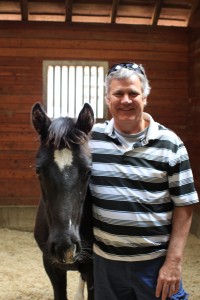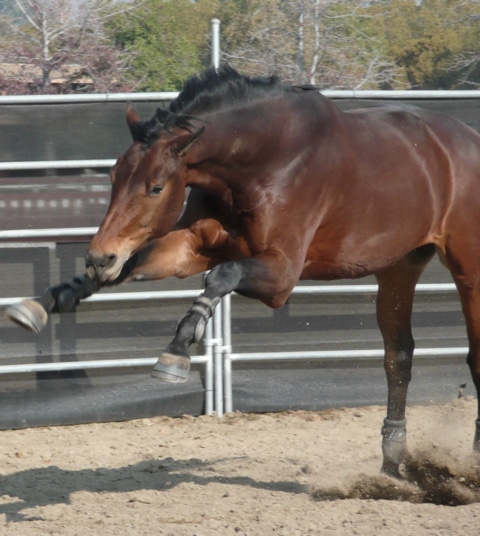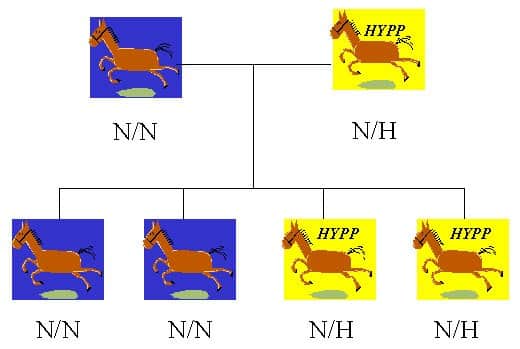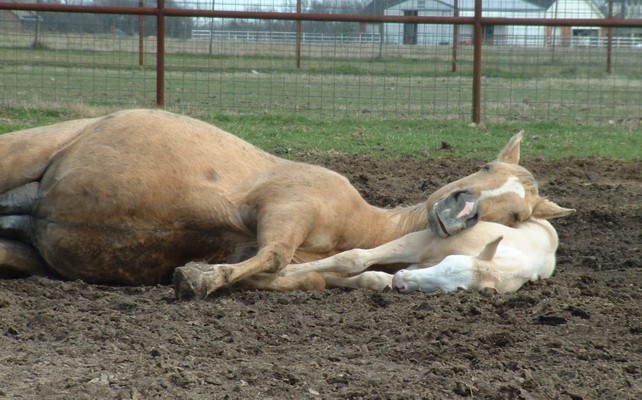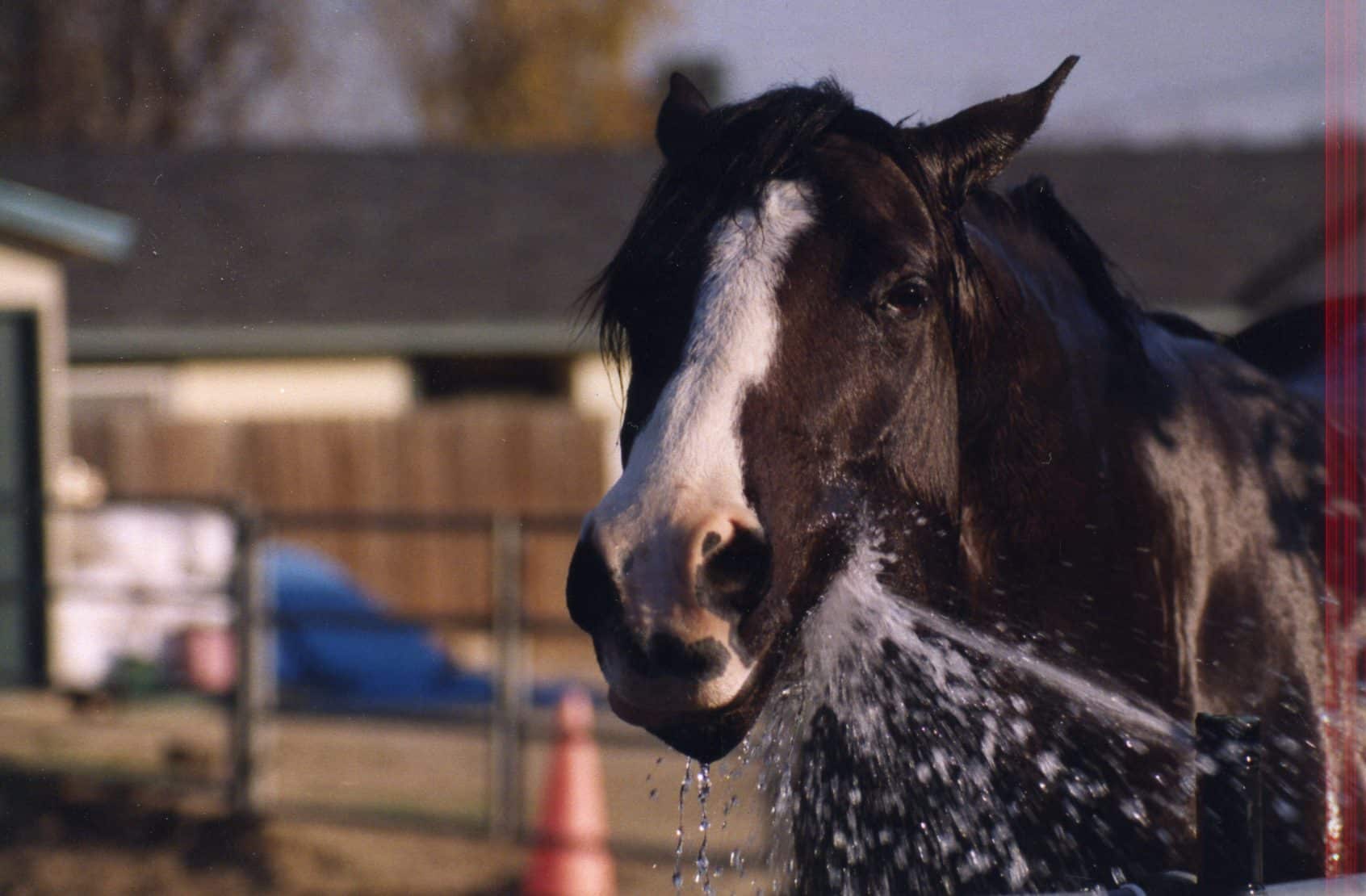 I really do love my job – I get to help horses. And, to be honest, I like helping horse owners, a lot, too, (which is what drives me to write all of these columns). In order to help horses – and their owners – I think that it’s a good idea for me to know what I’m doing.
I really do love my job – I get to help horses. And, to be honest, I like helping horse owners, a lot, too, (which is what drives me to write all of these columns). In order to help horses – and their owners – I think that it’s a good idea for me to know what I’m doing.
“Duh,” you say?
Well, here’s what I mean. Knowing what I’m doing is more than just having knowledge. It’s more than just having experience. It’s also knowing that the products that I’m using are what they say they are.
And that’s why, when it comes to treating horses, I mostly like medicines.
One of the reasons that I like medicines is because when I’m trying to do something, I’d like to know that what I’m using to try do something really does do something. And while medicines don’t always work, when it comes to medicines, I can usually be assured of at least three important things.
- There’s a dose
- There’s medicine in the medicine
- I know how much medicine is in the medicine
Now if you think about that, you might say, “OK, that’s stupid. What’s your point?” So let’s look at each one.
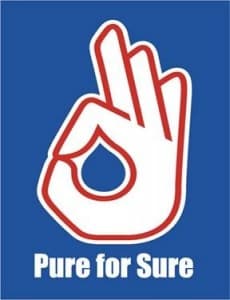 1. THERE’S A DOSE: As you might imagine, as someone who thinks that science is a pretty guide guide for how to treat horses, I’m a big fan of things that I can measure. When it comes to medicines, I like knowing that people have spent some time figuring how much medicine it takes to actually do something. So, for example, when I pull up a syringe full of a sedative, I have a pretty good idea of how much it is going to take to get the effect that I want. Oh sure, there’s some individual variation, but that variation is pretty small. It’s not like I have to choose between giving a horse 1 or 3 syringe fulls of something, and then wait to see what happens. I might have to add a little bit if I don’t get the desired effect, but because people have established a dose, I’ve usually got a pretty good idea of what to expect when I give a medicine. And I like that.
1. THERE’S A DOSE: As you might imagine, as someone who thinks that science is a pretty guide guide for how to treat horses, I’m a big fan of things that I can measure. When it comes to medicines, I like knowing that people have spent some time figuring how much medicine it takes to actually do something. So, for example, when I pull up a syringe full of a sedative, I have a pretty good idea of how much it is going to take to get the effect that I want. Oh sure, there’s some individual variation, but that variation is pretty small. It’s not like I have to choose between giving a horse 1 or 3 syringe fulls of something, and then wait to see what happens. I might have to add a little bit if I don’t get the desired effect, but because people have established a dose, I’ve usually got a pretty good idea of what to expect when I give a medicine. And I like that.
That’s one of the problems that I have with a lot of things that are given to horses that pretend to be like medicines. Take glucosamine (please). I’m uncomfortable with the fact that there’s no such thing as a dose:response curve for glucosamine. That is,  nobody really knows how much glucosamine it takes to get a desired effect (OK, nobody can even consistently demonstrate that there is an effect, but that’s a different discussion). When people have looked, they’ve found that the amounts of glucosamine given to horses are 500 – 1000 times less than what they given when they do see effects from glucosamine in the test tube. And no one is going to give 500 – 1000 scoops of glucosamine a day. Heck, even if someone could afford it, the horse wouldn’t eat it anyway.
nobody really knows how much glucosamine it takes to get a desired effect (OK, nobody can even consistently demonstrate that there is an effect, but that’s a different discussion). When people have looked, they’ve found that the amounts of glucosamine given to horses are 500 – 1000 times less than what they given when they do see effects from glucosamine in the test tube. And no one is going to give 500 – 1000 scoops of glucosamine a day. Heck, even if someone could afford it, the horse wouldn’t eat it anyway.
And you have the exact same problem with pretty much any herb or supplement. There’s no legitimate dose that’s been tested and established. By the way, I don’t consider a plastic scoop to be a dose – that’s just something that manufacturers throw in tubs to make things convenient for owners. And don’t even begin to get me started on the marketing brilliance that is selling horse owners supplements in prepackaged strips.
BOTTOM LINE: I like medicines, because I’m pretty sure of the dose.
2. THERE’S MEDICINE IN THE MEDICINE: I really like getting what I pay for. If I were to pay for, say, a glass of iced tea, I’d be much happier if I got a glass of ice tea than if I got a glass of water. I’d be really unhappy if all that the server brought was a glass with nothing in it. I’d like some assurance that when I order tea, I’m going to get tea. If I want to put something in the tea – say sugar, or lemon – I can add that, if I want. You get that assurance with medicine. When you buy a bottle of medicine, you know you’re getting what you pay for. There are rules governing their manufacture.
That isn’t necessarily the case with supplements. There’s no one regularly looking to see if there’s any “there” in there. That’s not always the case with compounded medications, either. In fact, some recent horse tragedies due to compounded medications occurred because somebody made a mistake, and there was more “there” in there than what was desired. And it’s certainly not the case with herbal products, where not only can you not be sure of amounts of active ingredients, you can’t even be sure if there are active ingredients, or even if the plant that was used is the plant that is named on the label.
When it comes to adding stuff, I like to be in control of that, too. With non-medicines, you’ve got the added possible surprise of stuff being added without your knowledge. This is a big problem with herbal products, and especially those that are considered “Traditional Chinese” medicines. Study after study has shown that those products may be contaminated with all sorts of things, such as microbials, heavy metals and even – gasp – medicines (CLICK HERE to see one such study).
 Medicines are not without problems. They don’t always work. They are not harmless, of course. Most medicines have side effects (CLICK HERE to read my article about side effects). Happily, because people have to look for such things before they sell medicines, we know about most of those, too. I suppose I’d rather dance with the devil that I know, rather than the one that I don’t know.
Medicines are not without problems. They don’t always work. They are not harmless, of course. Most medicines have side effects (CLICK HERE to read my article about side effects). Happily, because people have to look for such things before they sell medicines, we know about most of those, too. I suppose I’d rather dance with the devil that I know, rather than the one that I don’t know.
BOTTOM LINE: I like knowing that there’s medicine in the medicine.
3. I KNOW HOW MUCH MEDICINE IS IN THE MEDICINE: One of the other comforts of medicine is that the dose is measured. So, for example, when I’m looking for 500 mg of flunixin to give to a horse, I can stick my needle in the bottle and draw up pretty close to exactly 500 mg. The amount is right there on the label. I don’t have to worry about thinking that I’m going to draw up 500 mg and – SURPRISE!!! – actually draw up 5000 mg. Or 0 mg. Manufacture of medicines is tightly controlled. I’m comforted by that.
That’s not the case with other stuff. Take glucosamine (again). At least two studies have shown that the content of glucosamine products can vary widely from what’s on the label. The same thing has been shown with compounded phenylbutazone (bute). And compounded medications that didn’t have in them what they were supposed to have in them have killed horses. Just sayin’.
 NOTE: If you say you like medicines, you get opened up to criticisms like, “Oh, you’re just in the pockets of the drug companies,” and such. It’s as if by liking medicines, you’re some sort of a veterinarian-joey to a pharmceutical company-jill.
NOTE: If you say you like medicines, you get opened up to criticisms like, “Oh, you’re just in the pockets of the drug companies,” and such. It’s as if by liking medicines, you’re some sort of a veterinarian-joey to a pharmceutical company-jill.
BY THE WAY: A female kangaroo can be called a lot of different things. Technically, they’re called does, but they also get called jills, or flyers. Collectively, a group of kangaroos (yes, that’s the proper plural) is called a mob, a troop, or a court.
DID YOU KNOW that in Spain, babysitters are called kangaroos (canguros)? I just love that.
Still, while I think that being a joey looks like a lot of fun, I’m not a kangaroo, and I’m not in the pocket of any drug company (I pay for this stuff out of my OWN pocket).
 Honestly, when I can, I don’t use medicines. Unless there’s some need, I prefer to treat horses with no medicine at all. Time, bandaging, and controlled rehabilitation can do a lot. Giving “something” to horses isn’t always the best thing to do, and it’s certainly not always the the easiest thing to do. Giving “something” (anything) can be a pain, for a lot of reasons. If your horse is anything like, say, every other horse, they usually don’t like to get medicines, or much of anything else that requires squirting in the mouth, injecting, etc. Owners often don’t like to be bothered with giving medicines, either. Plus, medicines are often expensive, and nobody likes to get a bill. So if I can look after a horse and not have to give it anything at all (assuming that the outcome is likely to be successful, of course), I’m usually very happy, and so is the horse. So are most owners, most of the time.
Honestly, when I can, I don’t use medicines. Unless there’s some need, I prefer to treat horses with no medicine at all. Time, bandaging, and controlled rehabilitation can do a lot. Giving “something” to horses isn’t always the best thing to do, and it’s certainly not always the the easiest thing to do. Giving “something” (anything) can be a pain, for a lot of reasons. If your horse is anything like, say, every other horse, they usually don’t like to get medicines, or much of anything else that requires squirting in the mouth, injecting, etc. Owners often don’t like to be bothered with giving medicines, either. Plus, medicines are often expensive, and nobody likes to get a bill. So if I can look after a horse and not have to give it anything at all (assuming that the outcome is likely to be successful, of course), I’m usually very happy, and so is the horse. So are most owners, most of the time.
 PARADOX ALERT: Usually, people who own the horses are happy to do be able to do nothing. However, some people find doing nothing unsettling. They like to feel like they’re doing something, and they aren’t happy unless they get something to do. They’re even more than happy to pay for the privilege of doing nothing. In fact, when people pay money to do nothing, some of them will even get angry at you when you tell them that they might actually be doing nothing. Nobody likes to feel like they’ve been fooled, that what they paid for – or prescribed – might not be actually be worth the money. If you don’t believe me, look at the comments that follow many of articles.
PARADOX ALERT: Usually, people who own the horses are happy to do be able to do nothing. However, some people find doing nothing unsettling. They like to feel like they’re doing something, and they aren’t happy unless they get something to do. They’re even more than happy to pay for the privilege of doing nothing. In fact, when people pay money to do nothing, some of them will even get angry at you when you tell them that they might actually be doing nothing. Nobody likes to feel like they’ve been fooled, that what they paid for – or prescribed – might not be actually be worth the money. If you don’t believe me, look at the comments that follow many of articles.
You can spend a lot of money finding something to do, even if that something isn’t better than nothing, insofar as results go. And that leads to one of the Ramey Rules:
It’s better to do intentionally do nothing than it is to waste time and money doing nothing.
Look, I get that some people are afraid of medicines. There are a whole lot of reasons, some of which even make some sense (say, concern about side effects). What I don’t get is why, as an “alternative” to medicines, some people seem almost eager to embrace products that can’t be verified for content, for effectiveness, for safety, or for dose. For my own animals (currently, two dogs, a 4-year-old Warmblood filly, a snake, and a rabbit), if they need some medication, I guess I’d rather give them something in which both the effects AND side effects are pretty well known, than play an expensive game of therapeutic roulette with them. And if they don’t need anything, I’d rather give them nothing. I don’t have the time to do nothing or the money to pay for nothing.
Honestly, good care isn’t about giving medicine – or any product – to your horse. It’s mostly about giving a whole lot of love, good food, exercise, and, of course, some attention. But when your horse does need to get something, I’m not in favor of giving something that’s unmeasured, unstudied, unsupported, and/or ineffective. If my horse needs something, I’d rather give her medicine.



